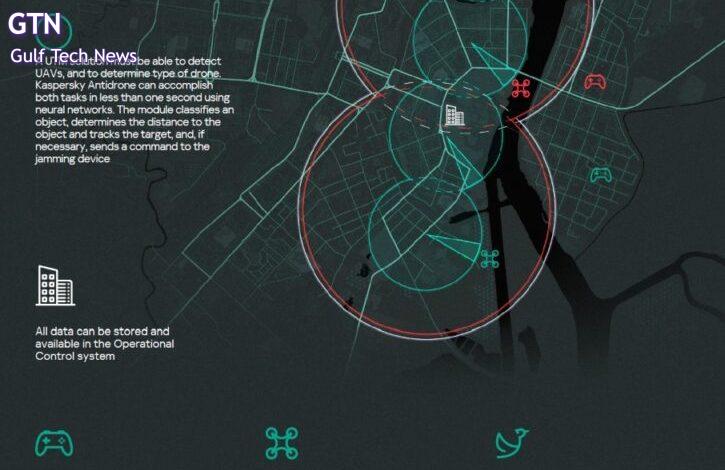Flight tracker for civil drones – why do we need it?


By Vladimir Kleshnin, Business Development Manager at Kaspersky Antidrone
With a constantly growing UAV market and mass adoption of drones in many spheres of our lives – from agriculture to medicine and production – these gadgets are moving from the category of futuristic devices to everyday use appliances before our eyes.
What’s more, the long-waited Amazon drone delivery service announced in June this year, has potentially paved the way for other ecommerce companies. With the success of Prime Air, others will benefit from Amazon’s experience and introduce their own unmanned shipping services. Given drone delivery significantly reduces time and cost for transportation, this technology could fast become a part of our daily routine.
However, something still slows down this rapidly developing technology. Let’s see, why mass drone usage on an equal basis with cars still mostly exists only in plans, and how technologies could help make it a reality.
Bottlenecks of the promising industry
Today, the capabilities of UAV have already reached a high level as they are fully-capable of uninterrupted flight and are equipped with accurate positioning, but the major obstacles to drone delivery implementation refers to legal settlements and security. What does this mean?
Drones are a whole new type of transport requiring legislation that is still being developed from scratch. The task for lawmakers is to create a no-conflict situation between UAVs and other air and ground transport to ensure drones don’t violate safety requirements dictated by the situation on the ground. There also should be pre-prepared solutions for disputable incidents.
The environment becomes increasingly complex when you factor in that drones can be launched by anyone from anywhere for diverse reasons and that land and weather conditions can also change. For example, an official filming drone might be welcomed on a city holiday or at a festival, while flights delivering goods over the fest’s territory probably should be banned. The work is already being actively done: there are several pilot legislation projects around the globe, with each newly launched drone delivery project largely contributing to the acceleration of the legislation process.
Security is also tied to legal aspects of drone operation and is another obstacle to their broad adoption. Commercial companies and individuals using drones must envisage that a UAV doesn’t threaten the security of other people and that organizations won’t affect the space where it flies. If a device is flying at its own altitude, along a specially allocated corridor, the drone operator has to be sure the UAV won’t move from it, otherwise, it may end up in collision with other flying vehicles.
On the ground, there should also be an opportunity to be able to gently neutralize flying objects if they illegally violate a perimeter, interfere with any important processes (such as passenger planes flights) or endanger someone (as it happens with multiple cases when UAV impede firefighters work). Considering drone-hunting eagles didn’t manage to prove their efficiency, now all hope is for a technological solution.
Mix of innovations to track a drone
Solving legal and security issues is impossible without proper drone monitoring systems. It is crucial to distinguish if any UAVs endanger public security by deviation or violate no-fly zones to neutralize the threat and prove the illegality of a flight.
However, UAV detection in the sky is not an easy task. The system must distinguish drones with different technical and visual characteristics, produced by different manufacturers or advanced drone enthusiast. The technology also has to determine the UAV’s commercial or consumer flight purpose and determine whether it’s allowed over certain territory or not. All this should be done instantly so as to keep pace with rapidly-moving drone.
Many companies are currently working on solving these problems, developing Unmanned Aircraft System Traffic Management (UTM) systems that would allow tracking of civil drones in the same way as for example FlightRadar helps monitor passenger planes. While consumers use this platform for flight information, it is based on solutions crucial for tracking if airplanes are moving according to the right direction and are following proper planned routes.
Since existing civil aviation monitoring systems are already well-established, the majority of current ecosystems for drones are aimed at integration with them. The concept of these solutions implies all drone users will be legally forced to install a special tracking beacon into their devices like those used in the civilian aviation world. However, if the drone has no beacon, it is invisible to monitoring.
Another approach regarding drone monitoring is considering the innumerable number of drones that have never been registered and is therefore difficult to expect all UAV owners will all of a sudden set-up a tracker on their device. Therefore, the efficiency of monitoring technologies should not depend on drone equipment. This type of ecosystem would require more time to develop, but would be far more universal and efficient. Kaspersky, which has already developed a solution for airspace protection and patented numerous inventions in this area, is now working on bringing this concept to life.
Kaspersky is creating a technology that can be used in various conditions while also uniting several tracking methods including advanced radio frequency detection, radar detection, lidar, acoustic and optical scanning. Machine learning and neural networks are also required to classify any detected UAVs to determine the type and model of a drone in less than one second.
The system remains flexible with the capability to add new, additional sensors, or combine it with multiple hardware solutions for detecting and classifying drones and can also integrate monitoring and control systems for light aircrafts. This would allow users to make network monitoring broader and more efficient with time.
Civil drones have a great potential to make life easier and more convenient, but this new industry comes with new risks. Today’s changing air space requires new safety solutions and developing them is an ambitious task which is now being solved using all the latest technological achievements.




